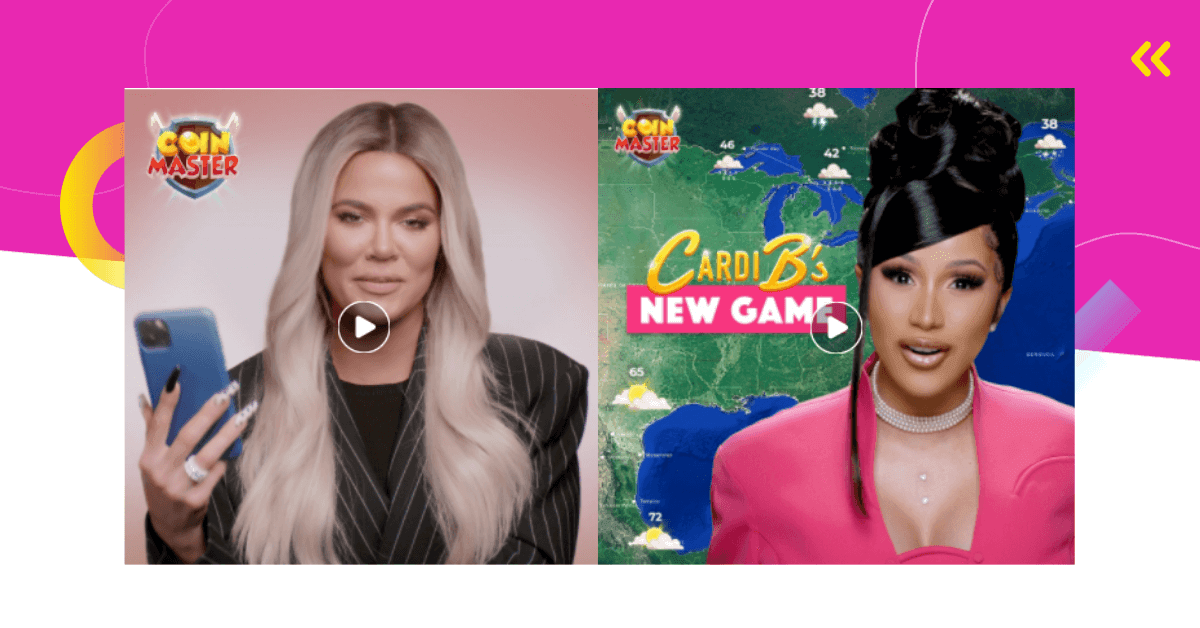Looking for a way to advertise your mobile app or game, but you want it to follow marketing trends and feel personal and subtle like you’re not even advertising? I have a solution for you – mobile app influencer marketing.
In this article, I will present you tips and tricks for mastering your mobile app influencer marketing campaigns!

About Mobile App Influencer Marketing
Now, what does influencer marketing even entail?
Influencers are people who have a dedicated following on social media, and they are usually seen as experts in their niche.
The essential thing in this marketing strategy is the trust factor.
According to a 2019 study from Adweek, 49.3% of respondents stated that they’d bought something because an influencer had recommended it.
Moreover, 44.2% of respondents said they generally trusted the influencers’ recommendations.
The question is – why?
Well, psychology says that people tend to trust other people more than an ad. Recommendations from influencers serve as a form of social proof to your app’s potential users.
Social proof is an idea that people will conform to be liked by or accepted by the influencer (who can represent a large part of society!)
Check out this graph by Statista, where they show how likely were people in the US to buy something that an influencer recommended:

Moreover, with mobile app influencer marketing, you can:
- Increase brand awareness
- Achieve long–term partnerships
- Reach your target audience easily
- Achieve authenticity
- Solidify your presence on social media platforms
- Get a lot of new users
But, the question remains – How do I approach mobile app influencer marketing?
Check out these tips and tricks, and master your mobile app influencer marketing strategies.
Tips for Mobile App Influencer Marketing
If you want to find out how to choose the right influencer, plan out a budget, and all the details you should pay attention to, keep on reading.

1. Define Your Target Audience
Defining the target audience for your mobile app or game can be difficult because we all think the same – the more, the merrier.
But, if you developed an innovative app that tracks cryptocurrencies, you wouldn’t want to show it to someone who has no idea what Bitcoin is, right?
To find who your target audience is, you need to ask yourself a few questions:
- What is my app or game about?
- If I had to offer my app to a family member or a friend, who would I offer it to? My grandmother or my 22-year-old friend?
- What are my target audience’s interests, personality, values, or lifestyle?
- Where does my target audience live? Do I plan on advertising my app in multiple languages?
Once you find out who your target audience is, choosing an influencer will become much easier. Now, you can check out which influencer is followed by your defined target audience.
According to research by MediaKix, 56% of women follow beauty influencers, entertainers, celebrities, and fashion influencers.
However, 54% of men who follow influencers on social media prefer gaming and tech influencers.
Websites like Heepsy and Influencity allow you to search by the target audience.
Both of these platforms are paid, but they can assist you in making the most of your data and locating an influencer who matches your requirements.
2. Decide at What Stage to Collaborate with an Influencer
Now that you have your target audience, it is time to decide when you want to have an influencer in your campaign.
There are three possible stages when you can launch your influencer campaign:
- Pre-launch promotion
- App launches
- Post-launch promotions
A pre-launch promotion entails that an influencer works on getting pre-registrations for an app before its launch and builds the hype around the game.
Here is an example from NoahsNoah, who ran the pre-registration campaign for the mobile game Infinity Ops: Destiny Warfare:

Furthermore, the app launch phase means that an influencer introduces the app to their audience.
In this phase, if we’re talking about a mobile game, a creator could post an entire Let’s Play video on YouTube. Moreover, during this phase, influencers create sponsored content for the app.
An example of the app launch is the dating app Bumble, advertised by micro and macro-influencers:
 Finally, post-launch promotions mean that influencers promote an older app or game and expand the user base.
Finally, post-launch promotions mean that influencers promote an older app or game and expand the user base.
Also, post-launch promotions can be used to introduce new game features, updates, game modes, and more.
A post-launch mobile game promotion was done by Jacksfilms, a comedy YouTuber, who advertised Raid: Shadow Legends’ new characters and features:

3. Plan out a Budget
Of course, not many influencers will be willing to work for free, so you should plan out how much money you’re ready to spend.
Naturally, this depends on the influencer that you’re thinking of hiring.
When you’re sending a pitch to an influencer, consider how many followers they have and how important they are in their niche.
Just think of it like this – you wouldn’t offer $100 to Pewdiepie, whose net worth is around $60 million, right?
A good way to check this is by opening Social Blade, typing in an influencer’s name, and seeing how much they earn.
4. Decide on an Influencer Type
Not all influencers are the same. Some have greater reach, while others have a modest audience. Similarly, some will cost you millions, while others are much more affordable.
It’s up to you to decide which one will work for your campaign.
Most commonly, we can categorize them based on their followers count.
Mega Influencers
If an influencer has more than 1 million followers, they belong to the category of mega influencers. For example, most celebrities are mega influencers.
If you’re aiming for top-tier influencers, you need to have a substantial marketing budget.
But keep in mind – engagement rates tend to drop as the follower count goes up. This is why working with celebrities might not always get you the results you expect.
Macro Influencers
Macro influencers have between 500k and 1 million followers and also provide a high reach. While hiring them is not as pricy as mega influencers, their services still have a high price tag.
Mid-Tier Influencers
Mid-tier influencers have an audience of 50k to 500k. They’re not celebrities but are well-known and respected in their niche.
Furthermore, their engagement tends to be better than mega or macro influencers and their posts are more authentic.
Micro Influencers
Micro influencers have between 10k to 50k followers.
This might seem tiny compared to previous influencer types. However, what micro influencers have going for them is high engagement and affordability, which leads to great results for brands.
Nano Influencers
Finally, nano influencers have between 1k and 10k followers – the smallest follower count out of all influencer types.
Just like micro influencers, they tend to have good engagement rates. Plus, nano influencers are very affordable and can fit any marketing budget.
5. Do Thorough Research on Mobile App Influencers
Now that you have a lot of information about what kind of influencer you should be looking for, it is time to conduct research.
If you’re not willing to pay for websites such as Scrunch or BuzzStream, there are a couple of other ways you can find your influencers.
First of all, you can try researching influencers by hashtags on Instagram, Twitter, TikTok, or even LinkedIn.
Usually, it works if you type the name of the app you’re looking for and add words like ad, ambassador, or partner. For example, the Bumble app influencers could be found by typing #bumblead, #bumbleambassador, or just #bumble.
Additionally, you can check out top influencers on Google.
You will be surprised to see that many influencers will advertise anything you offer them as long as you pay them well.
However, to reach the greatest number of people, you should continue to target influencers in your niche.
Check out Ludwig Ahgren, a Twitch game streamer, who promoted Coinbase, a blockchain app on Twitter by creating a show Mogul Money on his channel:

6. Choose the Right Influencer Platform
We have seen the example of Ludwig’s post on Twitter promoting Coinbase.
Choosing the right influencer platform is crucial to reach the most people. If you’re working with a macro or mega-influencer, chances are they will have a lot of followers on all platforms.
However, most influencers have one platform on which they’re dominant.
Therefore, you shouldn’t ask a famous YouTuber to advertise your app on Twitter. They can have a lot of followers there, but they are more skilled in making your campaign look better on their native platform.
Also, this category depends most on the element of your target audience.
Let’s suppose your target audience is adult males. According to the Omnicore Agency, you should consider Twitter influencers because 68.5% of global Twitter users are male, and one in every five adults in the U.S. uses Twitter.
According to MediaKix research, 70% of women chose Instagram as their preferred platform for following influencers.

7. Pay Attention to Influencer’s Engagement Rates
This step is pretty straightforward – you should pay attention to how high your influencer’s engagement rates are. Great websites for Instagram influencers are inBeat and Phlanx, where they have an engagement rate calculator.
However, you can also check it out yourself. Whether you’re searching for influencers’ Twitter, Instagram, TikTok, Pinterest, or Facebook profiles, you can see how many likes and comments they have compared to their following.
8. Explain Your Goals and Advertising Methods to the Influencer
To see good results from your mobile app influencer marketing campaign, you have to make sure that the influencer knows exactly what message you want to convey.
A simple conversation with the influencer will do just fine.
Explain to them what your app or game is about, why you made it, and why you are passionate about it. Don’t forget to mention who is your target audience, so the influencer can alter their message.
Remember, if you choose your influencer well, they will already know what to do.

9. Find Out What’s Trending in the Mobile App Influencer Marketing World
To find a new audience, you need to know what they like. So, you always need to stay up-to-date with the latest trends:
- Co-Creation – A trend where an influencer creates something in collaboration with a brand. Influencer co-creation creates value for brands, influencers, and their audience.
- Long–Term Partnerships – Collaboration with an influencer does not have to be a one-time thing; it could and should be consistent. People will have more trust in your app if you work with an influencer for a longer period.
- TikTok, Reels, Shorts Advertising – You’re missing out on the advertising power of short videos if you’re not using them. Of course, you should keep an eye on what goes viral, particularly on TikTok.
- Always–On Approach – Always-on influencer marketing entails maintaining a continuous social media presence through your target audience’s influencers. Its purpose is to ensure that you appear in your audience’s feed at the precise moment when they require your presence.
- Cross–Channel Campaigns – You won’t find many people today who only have one social media account. Influencers who establish their presence on multiple social media platforms and promote content between them can help increase your app’s exposure by boosting its visibility.
10. Stay Authentic
And finally, it’s crucial to show your humane side and authenticity.
If you choose an influencer for your mobile app campaign, you’re choosing the most authentic way to advertise.
Therefore, when providing a script or pointers for your campaign, make sure that they don’t sound robotic to influencers’ followers.
If you chose the right influencer, 99% of their followers should be humans and not bots, so keep that in mind when sending your pitch.
What to Avoid in Launching a Mobile App Influencer Marketing Campaign

Influencers with Fake Followers
Unfortunately, numbers are so essential nowadays that many people try to exaggerate their numbers to make quick money.
Having that in mind, when checking out your influencer, make sure that their engagement rate is high, that the comment section is not full of generic bot comments, and that real people chose to follow them.
Additionally, if you’re not sure, you can use fakecheck.co, or a paid service Social Audit Pro.
Selecting the Wrong Type of Influencer
Sometimes even the most thorough research can make you choose the wrong type of influencer and feel like you’ve wasted your money.
A micro-influencer can often do wonders to promote your app. On the other hand, a macro influencer may not work for you.
Moreover, you could select an influencer that might be totally into your niche and badly wants to represent your app.
To avoid this, communicate with your influencer of choice and even ask them to send you a test post of how your promotion will look like.

Influencers Who Don’t Disclose Their Sponsored Posts
Now, it can be hard to resist not utilizing influencers’ marketing power to its full extent.
However, you should avoid influencers who choose not to disclose that their posts are sponsored.
According to a recent study, more than three-quarters of influencer promotions on Instagram hide the required hashtags (#ad, #affiliate, #partnership, #sponsored…) beyond the main caption.
Yes, at first, if an influencer doesn’t disclose a sponsored post, it might seem more authentic.
However, many people will notice. Not only will they notice, but most social media terms and conditions state that it’s illegal not to disclose a sponsored post, according to FTC’s Influencer Guide.
Sending Everyone the Same Pitch
When it comes to sending a pitch to influencers, you could be tempted to just make one good pitch and send it to everyone. While it will work for some, it won’t work for everyone.
Therefore, at least come up with one for every type of influencer. For example, one type of pitch for gaming influencers, one for lifestyle influencers, etc.

Micromanaging an Influencer
Nobody likes someone who will constantly tell them what to do. It is okay to give pointers to influencers, but let them present your campaign the way they want to.
This way, you can ensure that your app is presented in the most genuine way possible.
Final Thoughts on Mobile App Influencer Marketing
That is it! You’re ready to venture into the world of mobile app influencer marketing! Just make sure to follow all these tips, and you will be successful.
For more tips on mobile app and game marketing, make sure to visit our Blog or Contact Us!







Comments